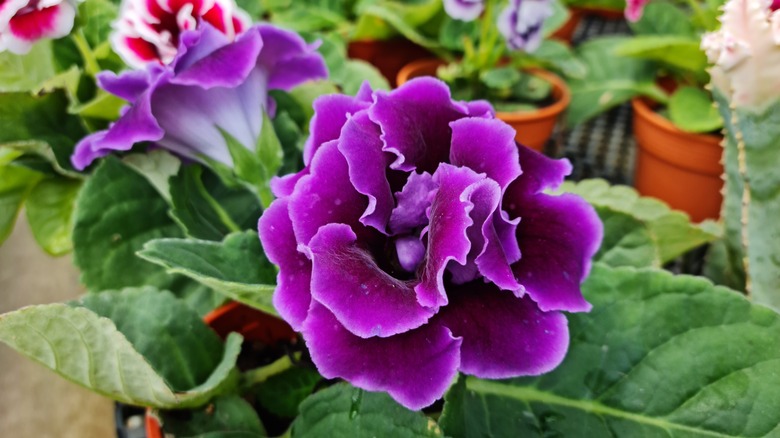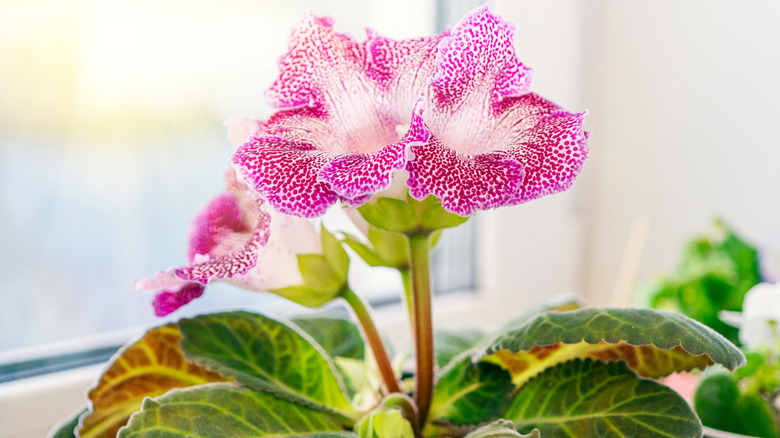Tips For Growing The Gorgeous Gloxinia Flower Indoors
The gorgeous gloxinia flower (Sinningia speciosa) is a delightful tropical plant that should be grown indoors unless you live in USDA hardiness zones 11 through 12. If you do live in these tropical or subtropical areas, it's a bulb you should consider planting in your garden this spring. It's native to Brazil and related to the African violet. It grows from a tuber or bulb, so will go dormant over winter — but spring back to life once the weather warms up again. Gloxinia is one of many indoor blooming plants that will brighten up your home. The beautiful soft, velvety leaves are complemented by showy blossoms in colors of white, red, pink, purple, and yellow. If you want to grow this lovely plant indoors (as a perennial) and enjoy more of those outstanding blooms, here are some useful tips you want to follow.
While gloxinias are often grown outdoors as annuals and discarded after they've finished flowering, there is a trick you can use to encourage a second flush if grown inside your home. By artificially inducing dormancy and allowing the plant to rest after it's finished flowering, you can enjoy more of those beautiful flowers for an extended period. Other tips for growing this enchanting flower indoors include giving the plant lots of bright light, providing a warm environment with temperatures between 65 and 75 degrees Fahrenheit, and keeping the soil nice and moist. You also want to feed the plant with a balanced liquid fertilizer at half strength every couple of weeks.
How to encourage your gloxinia to delight you with more blooms
You'll find gloxinias available at florist shops and garden centers around late winter or early spring, which is when they will bloom naturally for the first time. After you bring your plant home, place it in a warm, brightly lit spot out of direct sunlight where you can enjoy the blooms for several weeks. Once the flowers fade, cut the foliage right back until there are only two leaves left. Continue to water your plant and you should end up with a second flush of flowers.
After these flowers finish, it's time to give your plant a rest. To do this, keep it relatively dry and wait for the foliage to die back completely. Put the pot containing the tuber in a dark spot with a relatively constant temperature of around 55 to 60 degrees Fahrenheit. Mist the soil occasionally so that the tuber doesn't dry out. Gloxinia tubers need a rest period of around two to three months. Monitor your plant and as soon as you start to see evidence of new growth, bring your gloxinia back out into a well-lit spot in your home.
It's also a good idea to repot the sprouting tuber into new potting soil once it ends its dormancy. Once you've done this, water your plant as per normal and watch it grow and show off more of those stunning flowers. To add additional sparkle to your home decor, consider pairing your gloxinia with a few other plants with pink flowers you can grow indoors.

